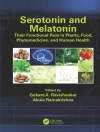Providing detailed information on structural HIV prevention interventions, this book is intended for health care practitioners and researchers to plan, implement, and evaluate such interventions in their own communities. As defined by the CDC, structural interventions focus on the physical, social, cultural, political, economic, legal, and/or policy aspects of the environment. Designed to reach a large number of individuals, structural interventions usually occur across entire communities, cities, or countries. As a result, the resources required to initiate structural interventions can far exceed those required for smaller-scale behavioral programs. However, changes from structural interventions have the potential to last over time, even after the programs have ended, resulting in effective use of public and private prevention resources. Because the reach of structural interventions is typically larger than that of individual- or group-focused interventions (for example, the 100% Condom Use Program, which was implemented countrywide in Thailand), their influence may be equally—if not more—significant.This book is a resource for health practitioners, educators, and researchers who seek HIV/AIDS structural prevention programs that have been shown to be effective in their regions or for their target populations (e.g. injection drug users, commercial sex workers, or the general public). With extensive case studies, the book classifies interventions according to the desired outcomes (specific behavior or policy changes) so that the reader may focus on examples of programs with similar goals and target populations to their own. Addresses the quintessential public health ethical dilemma regarding which types of environmental changes should be mandatory via legislation and which should be voluntary, promoted via programmatic, practice, and policy change.
表中的内容
Introduction.- Chapter 1 .Overview of Interventions to Decrease Injection Drug Use Risk.- Case Study 1 Legalization of Needle and Syringe Sale and Possession:Effect on Connecticut Injection Drug Users’ Injection Practices.- Case Study 2 The SHAKTI Intervention in Bangladesh:(Stopping HIV/AIDS through Knowledge and Training Initiatives)A Needle Exchange Program’s Effect on Injection Drug Users’ Injection.- Case Study3 Providing a Safer Injection Facility to Injection Drug Users: In Site: A Safer Injection Facility in Vancouver, British Columbia.- Case Study 4 Needle Social Marketing Strategy in China: Effect on Chinese Injection Drug Users’ Injection Practices.- Case Study 5 The Vietnam and China Cross-Border Project: Effect on HIV Risk Behaviors of Injection Drug Users.- Chapter 2 History and Politics of Structural Change to Reduce HIV Due to Non-Commercial Sex Risk.- Case Study 6 Louisiana’s Condom Social Marketing Program: Effect of Improved Availability and Access on Use.- Case Study 7 Promoting Sexual Responsibility Among Youth in Zimbabwe: Effect of an Extensive Multimedia Campaign on Indicators of Safer Sex.- Case Study 8 The 100% Jeune Social Marketing Campaign: Effect on Condom Use among Youth in Cameroon.- Case Study 9 Twenda na Wakati (Lets Go with the Times):Effects of a Radio Soap Opera on HIV/AIDS Prevention in Tanzania.- Case Study 10 A Safer Sex Media Campaign in Lexington, Kentucky: Using Public Service Announcements to Promote Condom Use.- Chapter 3 Overview of Structural Interventions to Decrease Commercial Sex Risk.- Case Study 11 Mandatory Condom Law in Nevada Brothels: Using Policy to Change Condom Use Practices.- Case Study 12 Compromiso Collectivo: Reducing HIV Risk among Female Sex Workers in the Dominican Republic.- Case Study 13 A Social and Structural Intervention in the Philippines: Effect on Condom Use of Establishment-Based Female Sex Workers.- Case Study 14 The 100% Condom Program in Thailand: Using Public Policy Change to Increase Condom Use in Brothels.- Case Study 15 The Sonagachi Project: Empowering Sex Workers in the Songagchi District of Calcutta, India.- Chapter 4 Overview of Structural Interventions to Increase Voluntary Counseling and Testing(VCT) and Antiretroviral Therapy (ART).- Case Study 16 Mandatory Offering of HIV Screening during Prenatal Visits: The Experience of Southeastern France in Response to National Policy.- Case Study 17 Free Highly Active Antiretroviral Therapy in Taiwan: Effect of a Country-Wide Policy on HIV Transmission.- Case Study 18 A Drama-Based HIV Intervention in South Africa: Effect on Voluntary Counseling and Testing.- Conclusion.
关于作者
Rachel E. Golden, Dr.P.H., M.P.H. joined Sociometrics Corporation in 2010 as a Senior Research Associate. In her role, Dr. Golden examines and compares HIV/AIDS prevention programs and focuses on the development and evaluation of health promotion projects and program replication for diverse populations. In addition, she is Vice Chair of Sociometrics’ IRB. Before coming to Sociometrics, Dr. Golden worked for the Los Angeles County (LAC) Department of Public Health, where she oversaw the LA Health Overview of a Pregnancy Event Project, focusing on fetal and infant mortality. She also supported the LAC Action Learning Collaborative Partnership to Eliminate Disparities in Infant Mortality, and assisted the LA Mothers and Babies Project. Prior to that she served as a grant-writer and program evaluator for the Rescatando Salud/Health Rescue Promotora Project, housed in the LAC Department of Health Services.
Charles B Collins, Jr. Ph.D. is the Team Leader of the Science Application Team, Capacity Building Branch, National Center for HIV, STD and TB Prevention, Centers for Disease Control and Prevention. His team of scientists is responsible for the dissemination of evidence-based behavioral interventions into HIV prevention practice. His team is working with 26 evidence-based interventions designated as having the highest evidence of efficacy for HIV prevention. Over the last 8 years, these interventions have been disseminated to over 3900 community-based prevention agencies; to over 900 city, county, and state health departments; and to over 1100 medical clinics.












